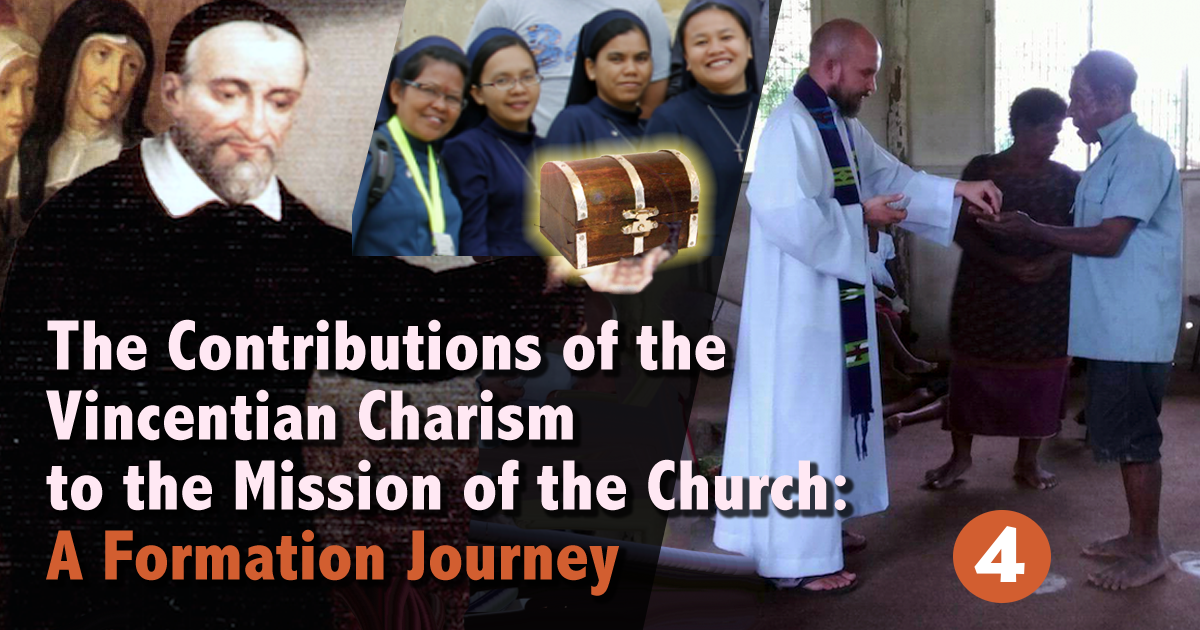This is the fourth of a series of formation packages meant for individual or group study which was introduced in “The Contributions of the Vincentian Charism to the Mission of the Church: A Formation Journey.” In that article, we also suggested a “Lesson Plan” for use in groups.

In a reflection entitled “Hazy, clearer.. that’s it” Fr. Tom McKenna reflected on the experience of getting fitted for new eye glasses.
You’re in the eye doctor’s office and sitting behind one of those lens machines looking through it at the chart at the other end of the room.
– “How is that?” “Not so clear.”
– “How’s that?” “Still pretty blurry. That’s better. Go back to the first. Try another. Ah, yes, that’s it.”
He wrote in the context of offering insight into the Emmaus journey of the disciples. But as I read Fr. Corpus Delgado’s reflections on Vincentian contributions to the Church I realized the image fit this section very well.
Vincent and Louise implicitly helped the church of 17th century France refocus. By their lives and the lives of those they inspired they refocused practical ecclesiology from the “Roman” model of Church back to the last judgement model of Matthew 25.
What characterized Vincent’s presentation of the Church?
Father Delgado writes,
“Vincent’s presentation is totally different from the ecclesiology of “roman” inspiration. That Roman vision flowed from the theories of Carinal Bellarmine and Peter Canisius: a hierarchical church, a stable and vertical institution. The Pope occupied the highest position in the pyramid, then the bishops and priests and on the lowest level were the laity. Vincent de Paul did not share in that vision and he was not the only one. (A. DODIN, Lecciones sobre vicencianismo, CEME, Salamanca, 1978, p. 66-67).
Vincent and Louise, at a very practical level, flipped this paradigm.
When one looks at their lived theology we see clearly their conversion-dedication to the poor, and a clear desire to encounter those marginalized by society and the Church in every part of the world.
Vincent de Paul and Louise de Marillac shared the belief that those who are poor are at the center of the Church’s mission, they are our masters.
Delgado writes,
Thus, Vincent did not place an emphasis on the hierarchy nor on some exterior adornment. For Vincent “the Church is above all else composed of those poor men and women who request assistance, all those individuals with whom he was able to identify himself when he was pastor in Clichy (a church near Paris). As Vincent served those poor people he offered up himself and his people. When speaking about those poor and humble men and women, he stated: ‘they are our lords and masters … they represent Jesus Christ.’ In this way Vincent gave a new perspective to the theology of the mystical body” [18].
Actually, as radical as this reversal sounds, it was really nothing more than restoring the vision of Jesus as laid out in Matthew 25.
Today, no wonder the members of the Vincentian Family are pleased to listen to the words of Pope Francis:
“Jesus, the evangelizer par excellence and the Gospel in person, identifies especially with the little ones (cf. Matthew 25:40). This reminds us Christians that we are called to care for the vulnerable of the earth.” (Evangelii Gaudium, #209).
- In what ways are we still unconsciously reflecting the “Roman vision”?
- What are the practical manifestations of this flipped theology in our personal lives and institutions?
See you next week!
| View any or all of the Articles and SlideShares including today’s | |
| Download any or all of the SlideShares as PDF • PPTX |
We hope you’ve enjoyed this collaboration of…





0 Comments